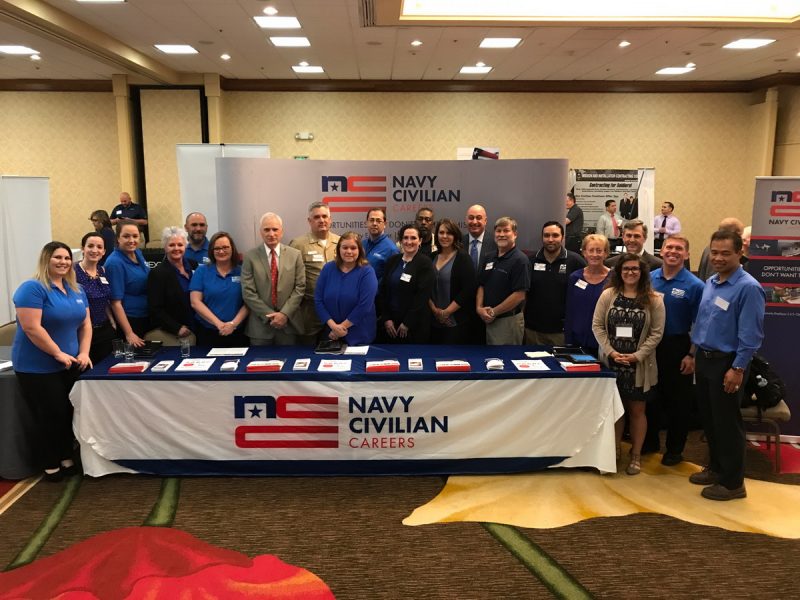
Recruiters from NAVAIR and across the Navy gather at the Veteran and Wounded Warrior Hiring and Support Summit in Seattle, Wash. (U.S. Navy Photo)
As part of an ongoing commitment to wounded, ill or injured service members, the Navy hosted its 7th Annual Veteran and Wounded Warrior Hiring and Support Summit in Seattle, Washington, May 23-24.
The two-day event gathered panelists, moderators and experts to share resources and information with employers and invited veterans and wounded warriors to share their perspectives on the challenges of obtaining and retaining meaningful work in the civilian sector.
“There’s a huge, untapped talent pool here, and we need to take advantage of it,” said Vice Adm. Paul Grosklags, commander Naval Air Systems Command (NAVAIR), speaking on the first day. “Folks are not just looking for a job. They’re looking for a career. They are tough. They have grit, and they’re exactly the folks I want in my workforce.”
“They have the capacity and time management skills to get the job done right, and on time, in spite of limited resources and immense pressure,” Grosklags told the audience of Navy and civilian employers.
The event demonstrated that, when it comes to recruiting and retaining veterans and wounded warriors, Settle and Washington state have stepped up their game in recent years, according to Stephen E. Cricchi, assistant commander for Corporate Operations and Total Force, NAVAIR.
“We felt really welcome as the Navy there,” Cricchi said. “It was clear based on the feedback from not only the companies that were represented but also the state and local leaders that that particular area of the country is hugely supportive.”
Also speaking on day one was actor and Seattle resident Tom Skerritt, a Korean War-era Air Force veteran. Skerritt told the audience he started his Red Badge Project, which supports wounded warriors, when he learned that an average of 22 veterans a day were taking their own lives and an estimated 500,000 veterans struggled with post-traumatic stress.
“Discipline of the military can be redirected into a discipline in creativity,” he said, “and some kind of creative expression — whether writing or molding something with our hands — brings out the best in every one of us.”
Skerritt’s Red Badge Project uses storytelling to nurture self-esteem and inspire success among combat veterans who suffer from post-traumatic stress.
On the second day, representatives from nearly 70 organizations were on hand to network and offer interviews and career guidance during the Hiring Heroes Career Fair, hosted and manned primarily by local employers and Navy organizations, including Space and Naval Warfare System Command (SPAWAR), Naval Sea Systems Command (NAVSEA) and NAVAIR.
“[You] know the quality of the talent pool that is here today,” Rear Adm. Christian Becker, SPAWAR commander, told employers in his opening remarks for the fair. “You know the value they will bring and how that will help grow your business. You know that it’s a good and right thing to do: To honor the commitment that these Americans and their families have made to this nation.”
In 2016, the Navy hired 10,609 veterans, 3,433 of whom were disabled combat veterans.

Recruiters from NAVAIR and across the Navy gather at the Veteran and Wounded Warrior Hiring and Support Summit in Seattle, Wash. (U.S. Navy Photo)


